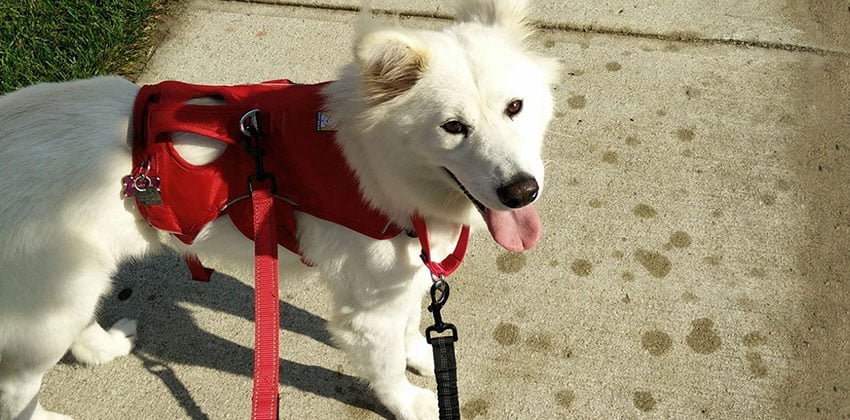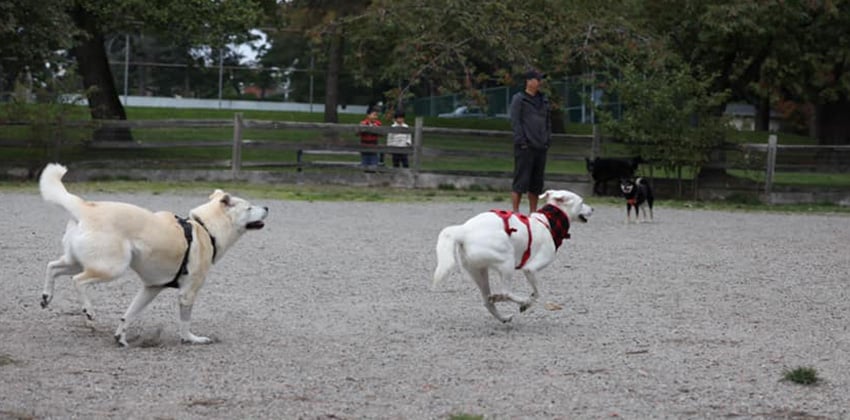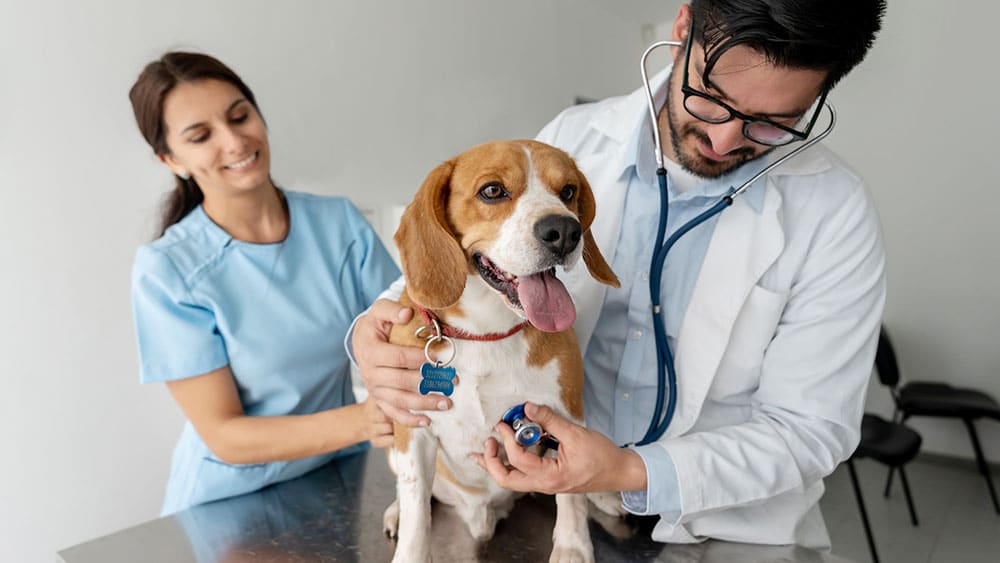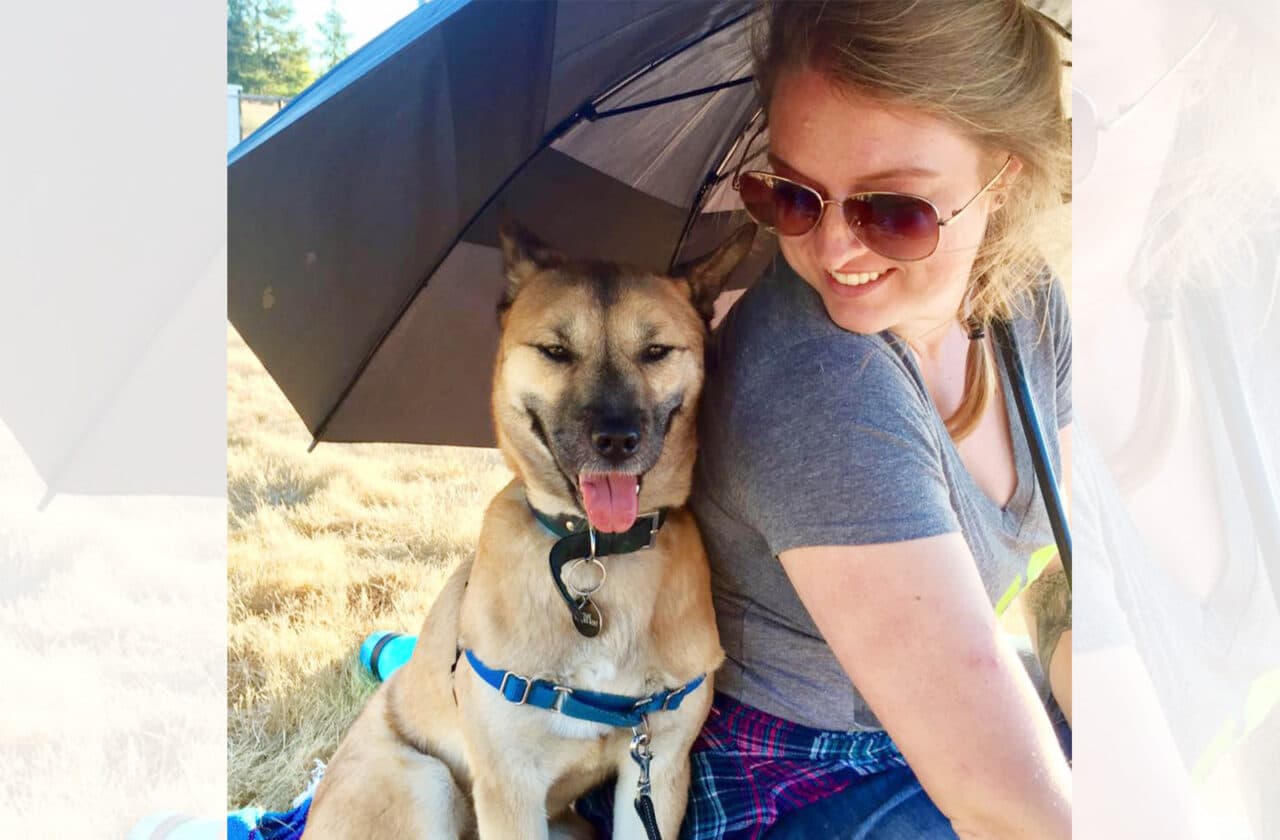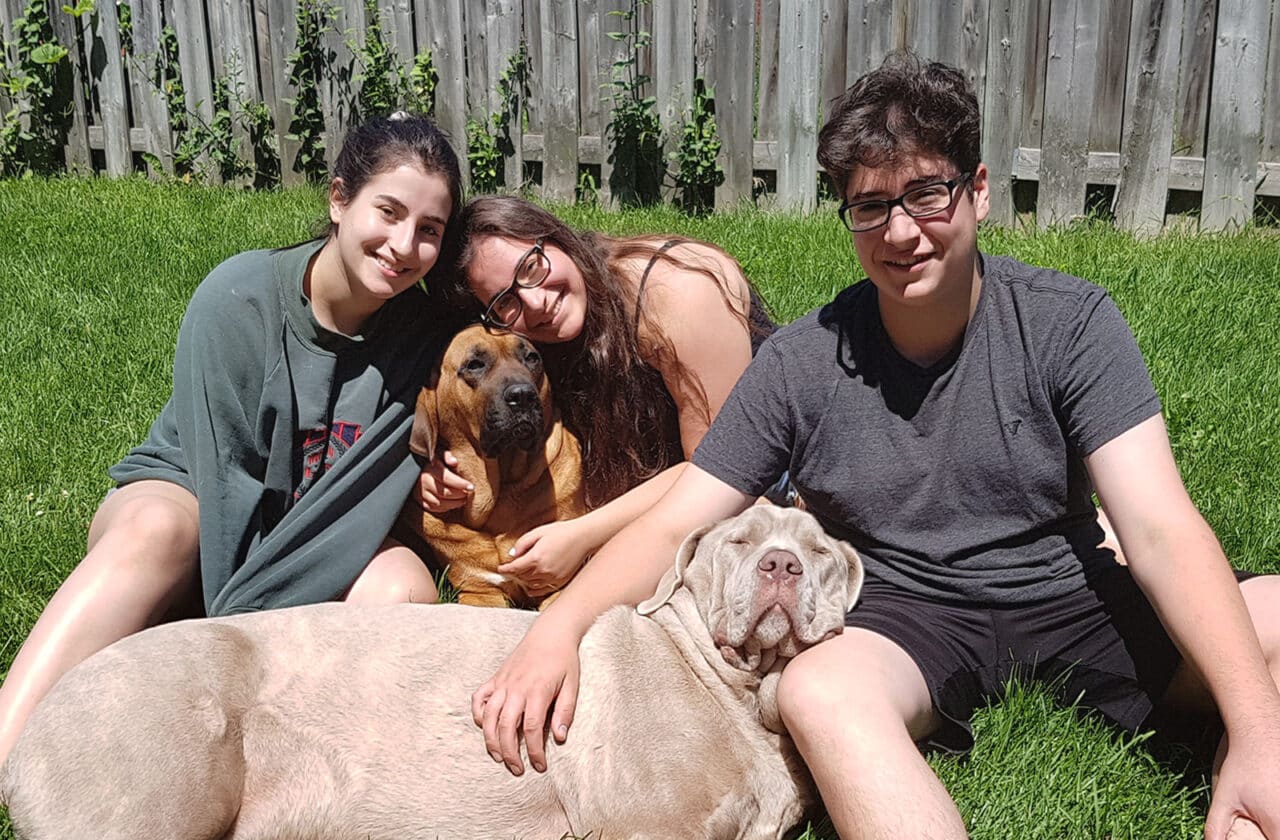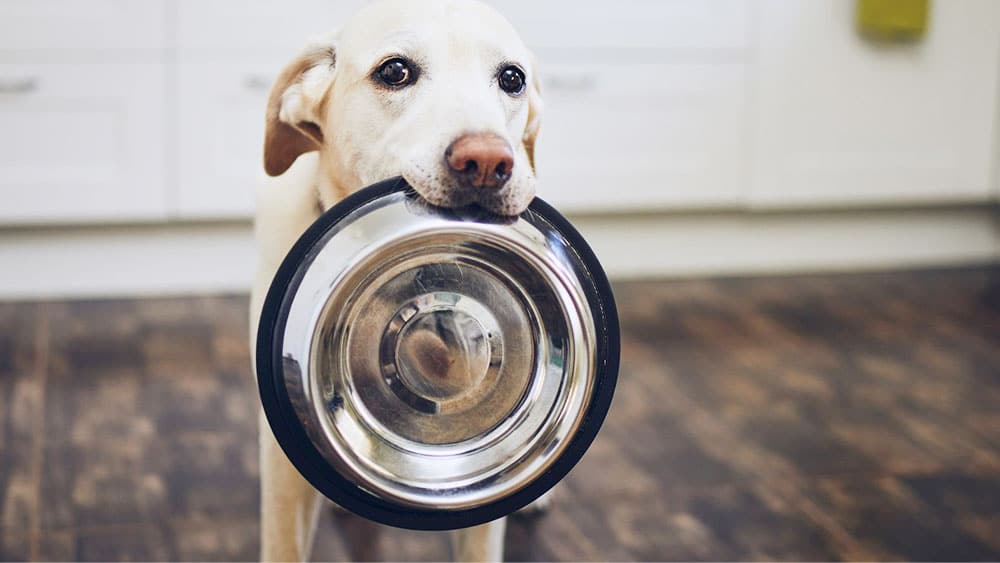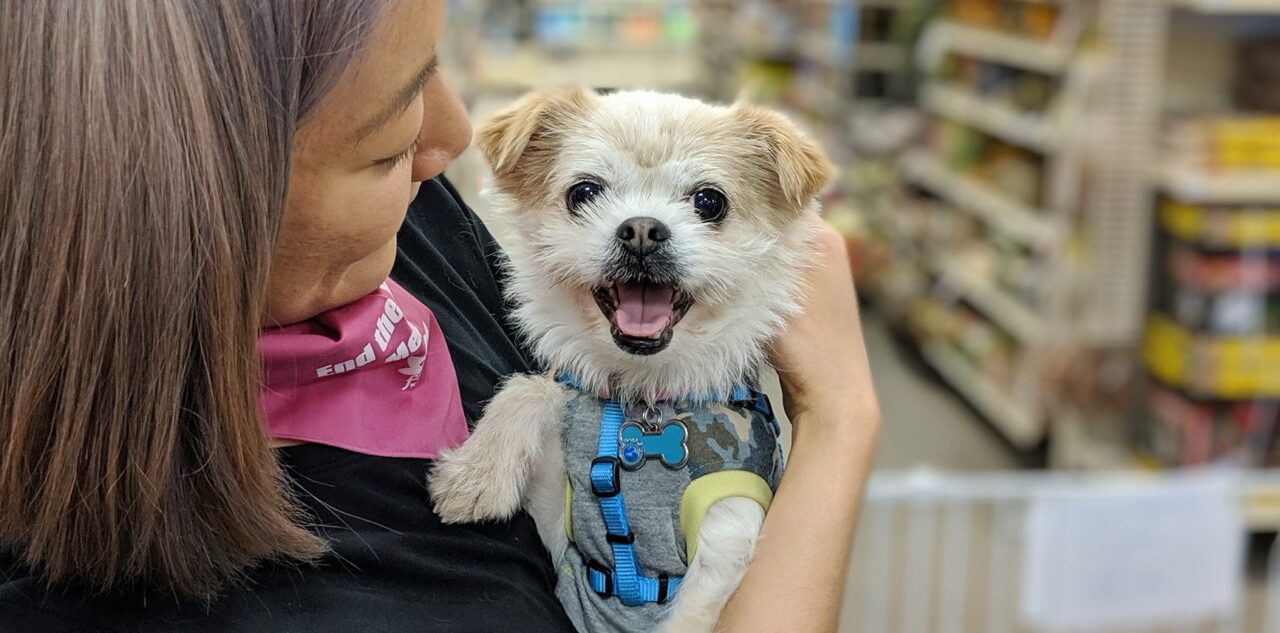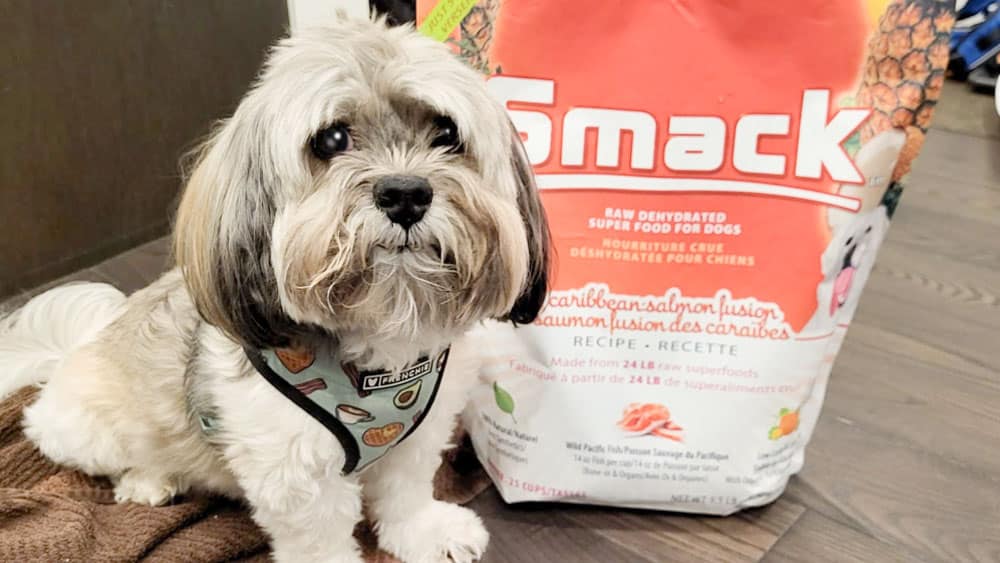Why Rescue Dog Safety Protocols are So Strict – Part 2
Guest Article by Mia Andrews
Information from an organization that helps find lost pets can help keep your new rescue dog from becoming a statistic.
Ken Price, founder of The Dream Team, has helped retrieve hundreds of lost dogs in the past three years. In a recent safety seminar attended by some new owners of Free Korean Dog rescue dogs, he presented valuable information to keep your new rescue dog safe. Based on his years of experience, here are his top five safety tips:
1. Two Collars, Two Leashes, and One Harness (2+2+1)
Your dog should have a permanent collar on which are attached his tags and preferably a GPS tracker. This collar never comes off and is never used to attach a leash. If your dog gets out of the house, he will have owner information and, with a GPS, a quick way to find him.
When walking your dog, put her in a harness and a martingale collar. Attach a leash to each. FKD recommends the Ruffwear Webmaster harness. Neither this brand of harness nor a martingale collar can be easily backed out of by a dog.
2. Be Calm and Confident
Your dog is nervous and will take her cues from you. If you are nervous or scared you can set her off and make it harder for you to control her. Your calm confidence will help your new dog to settle in and follow your lead.
3. Go Slow
A new dog should not leave the house for a few days other than to go to the washroom outside. Your dog needs to learn that the smell, sights, and sounds of her new environment are “home”, not something to run away from. When going out to the washroom follow the 2+2+1 rule.
For the following few weeks, walk your dog within a short perimeter of your home. This will create a comfort zone, within which your dog starts to become familiar. You’re expanding his “home” to become his “neighborhood”, imprinting him with points of reference should he ever become separated from you.
4. Lockdown in Effect
A dog driven to get outside can do so in the blink of an eye, between a crack in your legs, before you can react. It’s happened a number of times. Any open door or gate is a potential escape moment. Everyone in your household, plus all visitors, needs to have safety protocols impressed on them.
Ensure your dog is secure *before* you open the door. Have a leash by the front door so that if your dog beats you to answer a knock or a doorbell, you can easily leash and secure it. Put a large “Secure the dog first” sign on your door for that moment when someone is rushing to open the door and might forget about the dog.
5. No Off-leash
Throughout his presentation, Ken emphasized one point over and over: In his opinion, a rescue dog is never ready to be let off-leash. In his experience, it’s a problem waiting to happen. You can read more here: “Why This Expert Never Lets His Dog Off-leash”
6. No Off-leash, Even in Dog Parks
Many people think dog parks are safe places for off-leash but here are some of the problems Ken has seen first-hand
- Holes in fences
- Fences that can be climbed over by a small dog
- Fences that can be climbed or jumped over by a large dog
- Gates not secured or inattentive people entering/exiting
- Aggressive dogs not under owner control
- Poisoned food planted in the park
Ken’s suggestion is to avoid potential problems with dog parks by either using a long leash to allow your dog some running freedom or by avoiding them altogether.
Free Korean Dog volunteers agree with the no off-leash approach, even in dog parks. They have years of experience with the backgrounds and natures of the dogs they adopt. Their safety protocols are based on this expertise, along with the unfortunate knowledge gained from the experience of adopters losing their dogs.
*The seminar was hosted by local volunteers with Soi Dog, a rescue organization founded to provide a humane solution for the stray dog population in Asia.
Read More
Why rescue dog safety protocols are so strict – Part 1
Ruffwear – Webmaster harness on Amazon
Subscribe for Updates
Get our dogs in your inbox once a month, along with our latest news and events. We never send spam, and you can opt out at any time.

